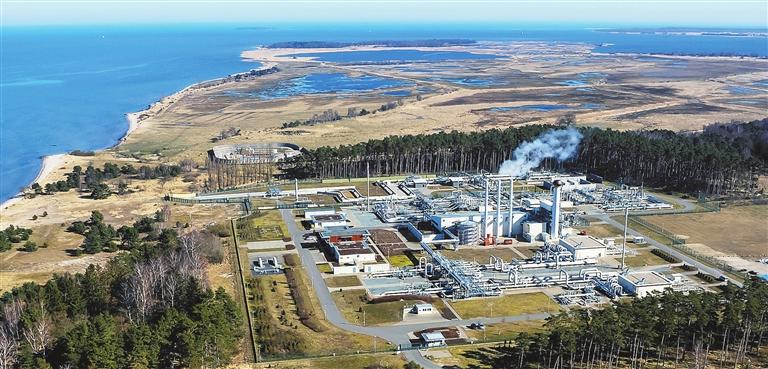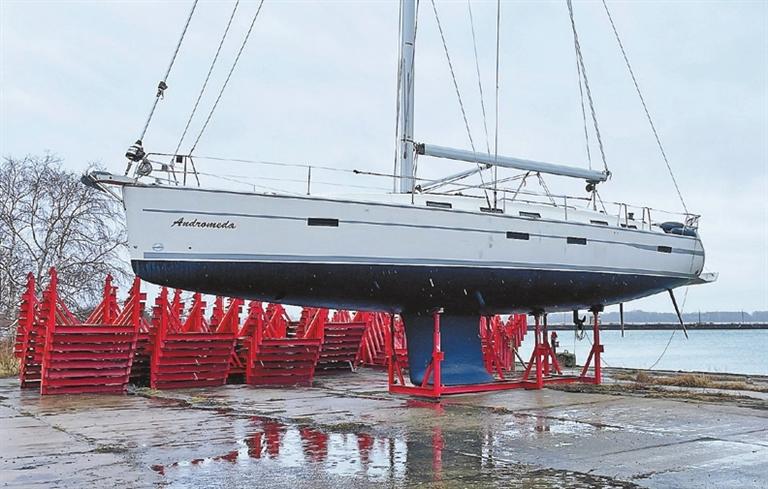

ONE year on from explosions that damaged the Nord Stream gas pipelines under the Baltic Sea between Russia and Germany, the question of who was behind them is unresolved. On Sept. 26, 2022, Swedish seismologists registered several blasts, some 17 hours apart off the Danish island of Bornholm that ruptured three out of four lines of the Nord Stream system, sending plumes of methane into atmosphere. Russia’s Gazprom said about 800 million cubic meters of gas, equivalent to about three months of Danish gas supplies, had escaped. It took several days for the gas to stop leaking. Since the blasts occurred in the exclusive economic zones of Sweden and Denmark, both countries are investigating, as well as Germany, where the pipes land. Co-invested by German, French, Dutch, Austrian and Russian companies, the multibillion-dollar infrastructure project was built by Russia’s Gazprom in two stages — Nord Stream 1 and Nord Stream 2. Each stage consists of two concrete-coated steel pipelines of about 1,200 km in length and more than 1 meter in diameter, laying at a depth of around 80-110 meters. Nord Stream pipelines had a total capacity of pumping some 110 billion cubic meters (bcm) of natural gas per annum, more than a half of Russia’s total export capacity. The Western owners have written off all their investments. In 2021, the EU imported 83% of natural gas consumed, with nearly half of the imports coming from Russia (153 bcm) and more than one-third of Russian imports through the Nord Stream (59.2 bcm), according to the European Council. The Russian Foreign Ministry has protested that the three countries deliberately delayed the investigation and tried to conceal who was responsible. Russia has asked the U.N. Security Council for an independent investigation but failed to win support, except from China and Brazil. Sweden found traces of explosives on several objects recovered from the explosion site, confirming it was a deliberate act. In July, Germany told the U.N. Security Council that it found traces of subsea explosives on a sailing yacht that “may have been used to transport the explosives.” Germany told the U.N. that trained divers could have attached explosives at the points where the damage occurred to the pipelines at about 70 to 80 meters deep. Sweden’s special prosecutor in charge of the investigation, Mats Ljungqvist, said in April that the main assumption was that a state or a state-backed group was behind the attack. Some intelligence reports cited by the U.S. media alleged a “pro-Ukrainian group” was behind the attack. Ukraine has denied involvement. “The longer the delay, the more difficult it will be to collect evidence and find the truth, the more doubts and speculations will occur, and the less credible the results of the investigations will be,” said Geng Shuang, China’s deputy permanent representative to the U.N. in July. Geng urged all parties not to politicize investigations and called for an early release of the results of country-specific investigations. Caution from the European states is probably a result of the politically sensitive and inconvenient truth. “Leaders see little benefit from digging too deeply and finding an uncomfortable answer,” the Washington Post reported in April, stating that officials “would rather not have to deal with the possibility that Ukraine or its allies were involved.” In February, Pulitzer Prize winner Seymour Hersh published a 5,000-word investigative report titled “How America Took Out the Nord Stream Pipeline.” Hersh said that the sabotage was a secret operation ordered by the White House, implemented by the CIA, and assisted by the Norwegian Navy. U.S. President Joe Biden did threaten in February last year that there would be no Nord Stream 2 if Russia attacked Ukraine — “I promise you we will be able to do it,” in his own words. The implications of the attack on the Nord Stream pipelines are enormous, said Helga Zepp-LaRouche, founder and chairperson of the German think tank Schiller Institute. She noted that the incident massively increased the immediate prospect of Europe’s deindustrialization and its dependence on U.S. liquefied natural gas. In 2022, the United States boosted liquefied natural gas (LNG) exports to Europe by 141% compared to 2021, surpassing Russia for the first time. In the first half of this year, the EU remains the primary buyer of U.S. LNG. The price to move away from Russian energy is not cheap. The cost for the EU to replace Russian gas with green technologies by 2028 would be nearly 811 billion euros (US$857 billion), according to a report released in May by Oxford researchers. The skyrocketing costs are already causing a massive exodus of companies from Europe, especially Germany, to the United States, Zepp-LaRouche said, adding that this bodes disaster for the economy and people’s living in Europe.(Xinhua) | 
